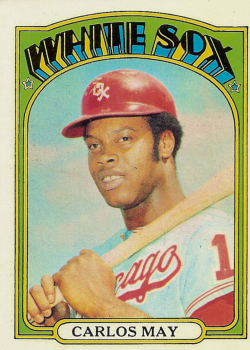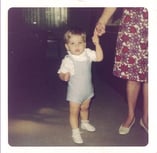Read Time - 7 Minutes

The World Series starts next week, and even though my team was out of it before May 1st, I’ll still be watching in earnest. Why? Because I’m a baseball geek.
I’m one of those that knows why the Dodgers are called the Dodgers. I know there is only one player to play for (and have a hit for) two different teams in two different cities on the same day—and both hits were off of future Hall of Fame pitchers. And I know the oddity that is the player’s uniform depicted above. Why? Because I am a baseball geek.
So much so, in fact, that I’ve coupled our “20 Questions” recognition sales tool to the game and its history—associating the list of 20 pointers to corresponding uniform numbers of players in Major League Baseball history. Why? Because I’m a baseball geek.
If you’ve ever played 20 Questions, you know you can identify nearly anything if you ask the right questions.
Creating an effective recognition program begins with the initial dialog with your client. This phase of the sales process not only initiates a proper course of action for the project, but positions you as a subject matter expert for custom recognition awards. Most importantly, perhaps, is that it creates a forum for the client’s voice.
Center the discussion on the client’s needs, and keep the conversation going. And, like this season’s Cincinnati Reds bullpen, stop pitching!
Selling Recognition Awards: Stop Pitching

1. What is the name of your “honor club”? (President’s Circle, Founder’s Award, etc.)
- Gives the project a name and an identity it from the start.
- Puts you on the path of where the decisions are being made.
- Immediately engages you in the context of your customer’s objectives.
2. What objectives does your recognition program serve within your organization? - Identify what’s important within your customer’s business.
- Hear your customer’s goals in their words—ask for their 30-second elevator pitch.
3. What behaviors and accomplishments is your recognition program directed to support? - Discover how recipients are contributing on a daily basis.
- Understand what is important to your customer’s success.
4. How are you measuring these achievements? - Determine if there is a process, and what accountability is involved.
- Discover additional opportunities for recognizing incremental achievement in multiple tiers.
5. What are the demographics of the recipients? - Get a feel for the types of people involved so you can focus solutions on what would appeal to them.
- Set the tone that the award recipient is an important part of your focus.
6. Are the awards presented in person at a single site, outing, or event? Or will they be presented individually in the field?
- Understand the degree of visibility, and begin to identify the shipment logistics.
- How awards are distributed and handled can guide the choice of materials and packaging.
7. Is there a theme related to the honor club? Are there logos/graphics specific to this theme? - A theme is an important design element.
- Ensure the presenter’s message is clearly stated.
8. Can you describe where and how the typical recipient works?
- Provides insight into the lives and livelihoods of the recipients.
- Helps determine the right kind of product given the physical display space the recipients have available.
9. What kinds of things have you done in the past to recognize your achievers?
- Establish if this is a new venture, or something they have done before.
- Shape your response to your customer’s level of experience.
10. What worked or didn’t work with past solutions?
- Uncover pain points.
- Determine what elements your customer wants to maintain, and which they are looking to change.
11. How would you describe your company’s culture? - Aim the solutions at the client’s unique qualities and market differentiators.
- Zero in on the recipients and what will most appeal to them.
- Tastes and values help define design cues that resonate with your customer.
12. What are your company’s primary mission statements/core value statements?
- Engage in discussion about your customer’s enterprise.
- Demonstrate that their objectives are the priority.
13. What is the history of your company?
- Product and design cues might be taken from their timeline.
- Give your client a chance to talk about their business.
- Give a voice to the message to be incorporated on the custom awards.
14. What do you hope to accomplish personally or professionally with this honor club?
- Make it personal to the client.
- Aim to make your customer a hero within their organization by helping them accomplish their mission.
15. Who is involved in the decision-making process?
- Identify the players involved.
- Understand the hierarchy involved and the tendencies of everyone with a stake.
16. What is the timing involved throughout the proposal and approval process?
- Identify the process involved.
- Set expectations and map out a plan together.
17. What is the single-most important objective to you?
- Make sure you gear your responses to what is near & dear to the client as an individual.
- Another opportunity to tune in to what will appeal to your customer.
18. What do you anticipate to be the greatest challenges in getting this project done? - See where the pinch-points might be and work to steer clear of them or plan for them accordingly.
- Understand where your customer has met with past success…and failures.
19. Are you engaged with other potential providers?
- Assess and measure your competition.
- Gain a sense of the level of importance and seriousness of your customer.
20. Where does this project fit in to the projects you have on your plate? - Assess the urgency involved.
- Shows empathy for your customer that you will

By the way:
The Dodgers name has its roots from their days in Brooklyn, where the Superbas were re-named the Dodgers following the proliferation of street trolleys and the resulting pedestrian “dodgers.”
On August 4, 1982, in the third inning of a day game for which he was playing for the New York Mets in Chicago against the Cubs, Joel Youngblood was traded to the Expos. He left the game—having singled off of Ferguson Jenkins—flew to Philadelphia to meet his new team there, and entered that evening’s game in the third inning. In the 7th inning, he singled off of Steve Carlton.
Carlos May wore the number 17 under his last name on his jersey throughout his major league career. So the back of his jersey revealed his birthday, May 17.
Photo Credit: TradingCardBB.com
 Dave Miller is VP of Sales & Marketing at Bruce Fox, Inc. and a professional writer by virtue of the fact his company is paying him to write this blog. He knows the Seattle Mariners and the Washington Nationals are the only teams to have never appeared in a World Series. The goal of his blog is to “edu-tain” (educate + entertain) promotional products distributors, with a focus on custom work. Dave also finds it very awkward to write about himself in the third person.
Dave Miller is VP of Sales & Marketing at Bruce Fox, Inc. and a professional writer by virtue of the fact his company is paying him to write this blog. He knows the Seattle Mariners and the Washington Nationals are the only teams to have never appeared in a World Series. The goal of his blog is to “edu-tain” (educate + entertain) promotional products distributors, with a focus on custom work. Dave also finds it very awkward to write about himself in the third person.
- Understand where your customer has met with past success…and failures.







